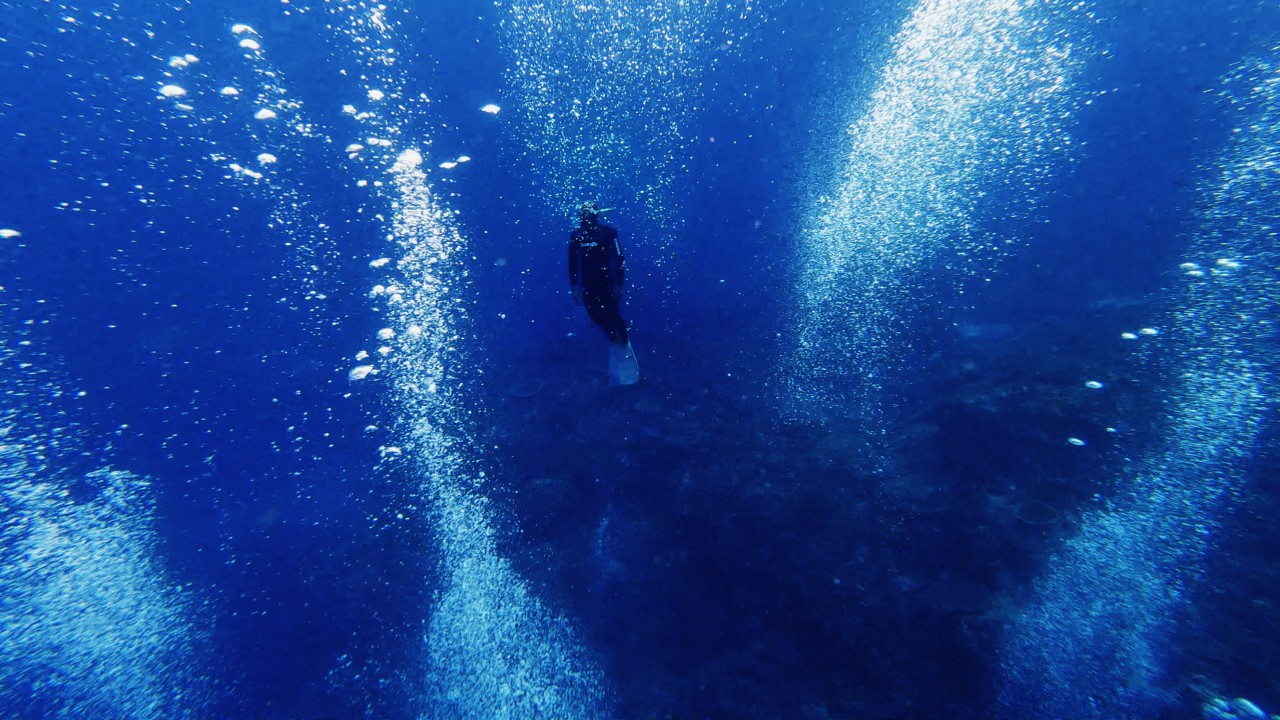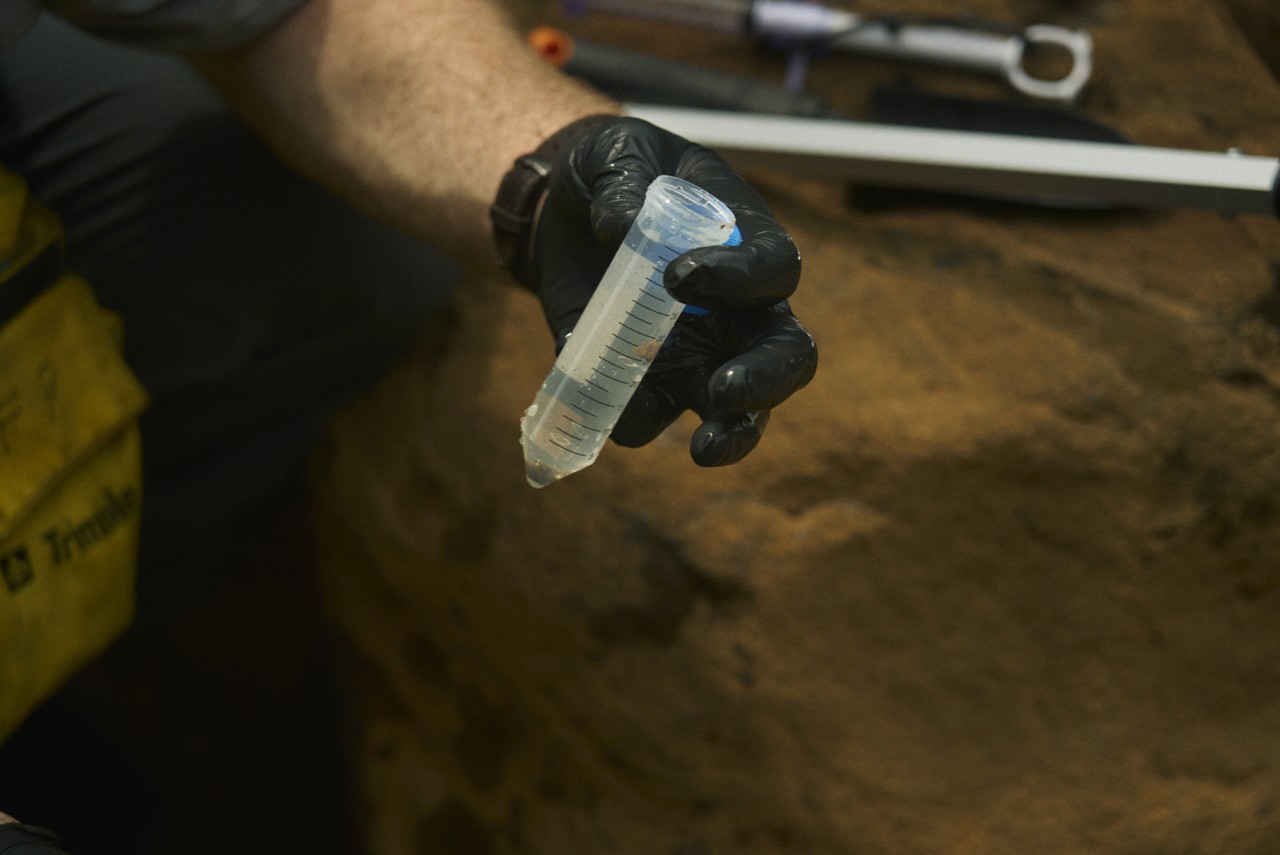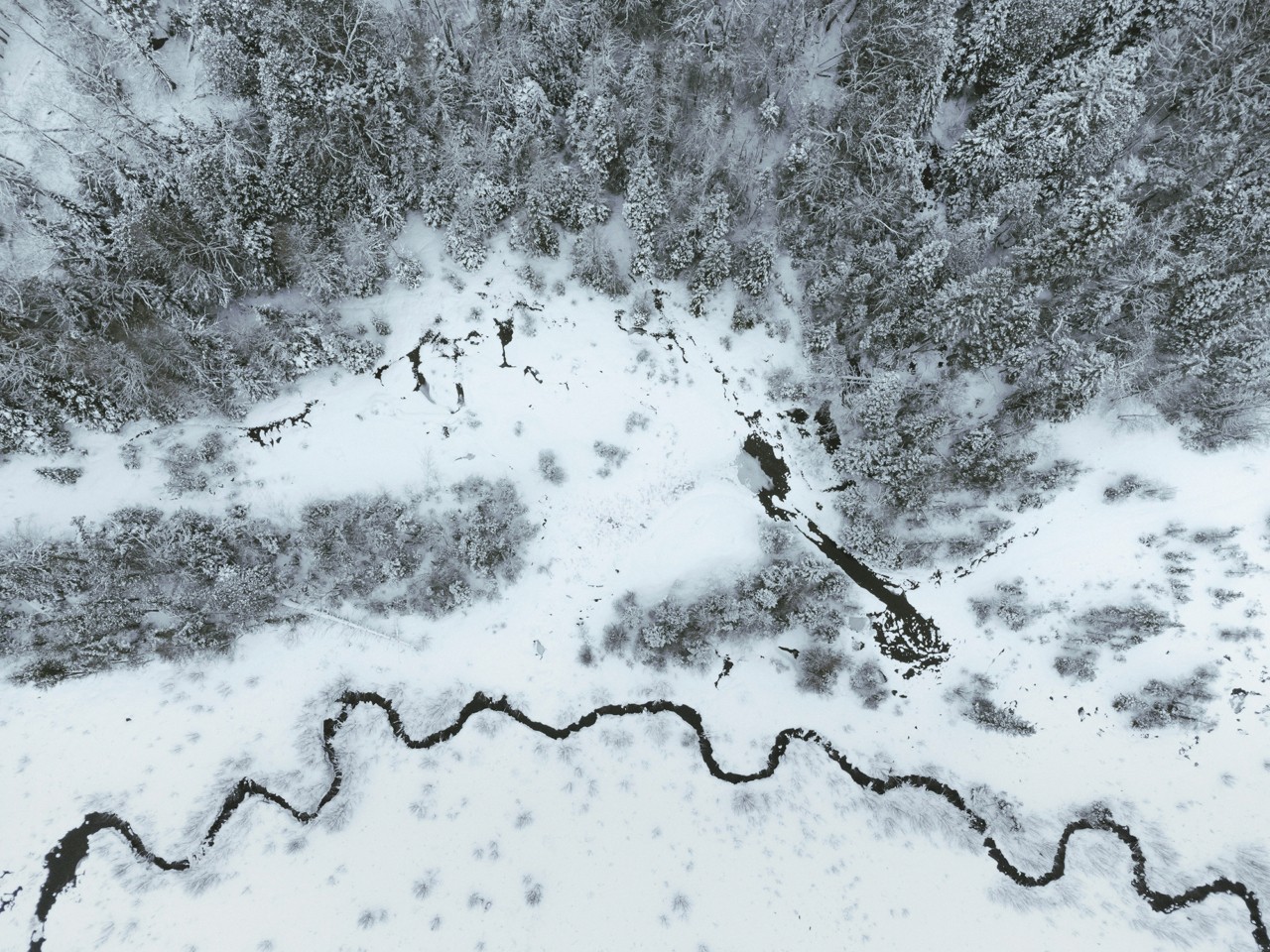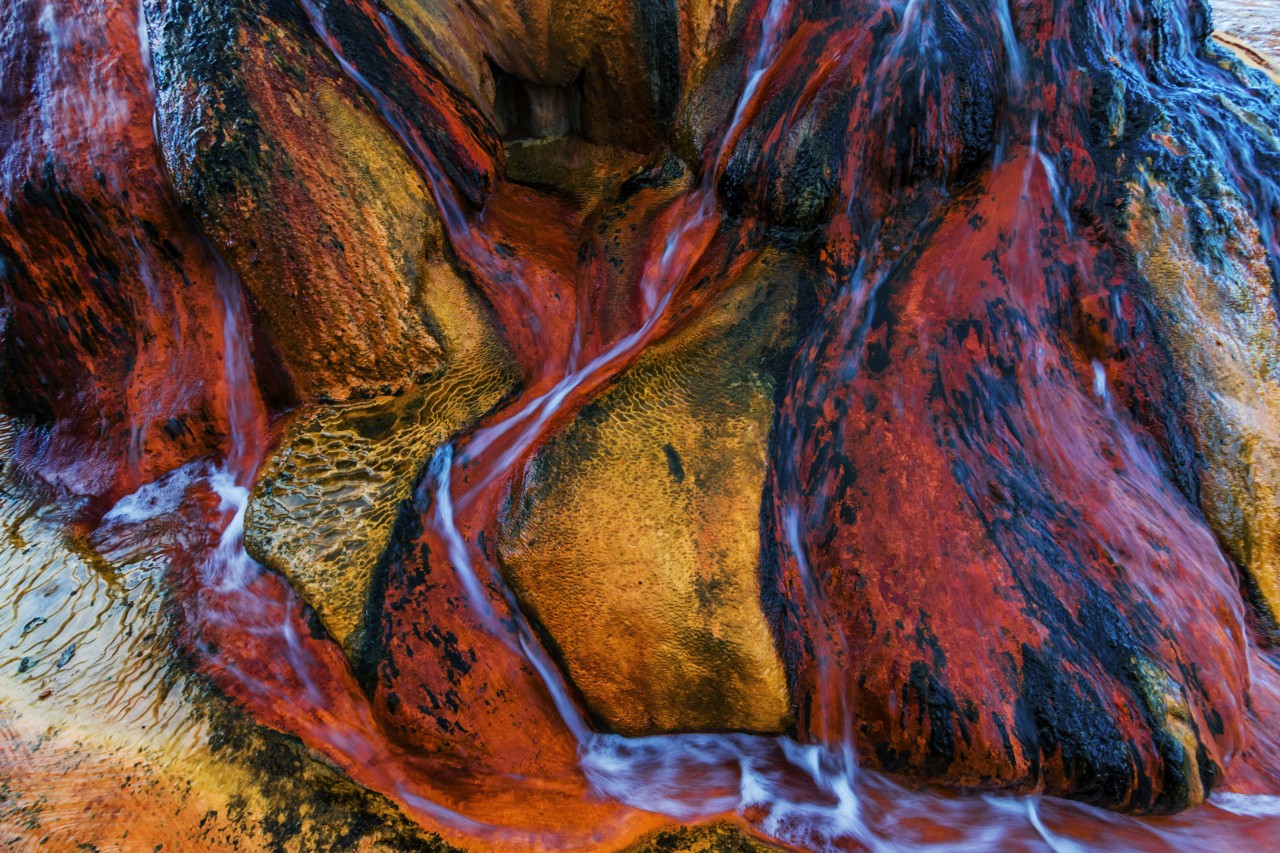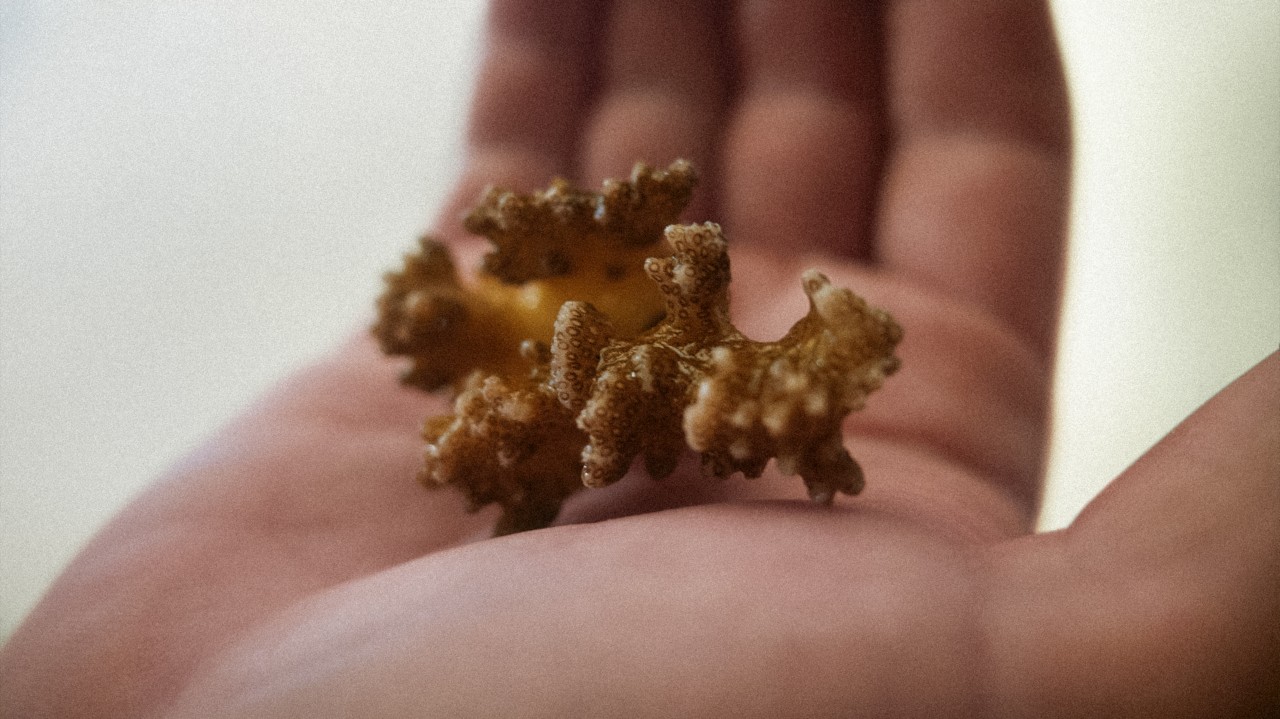
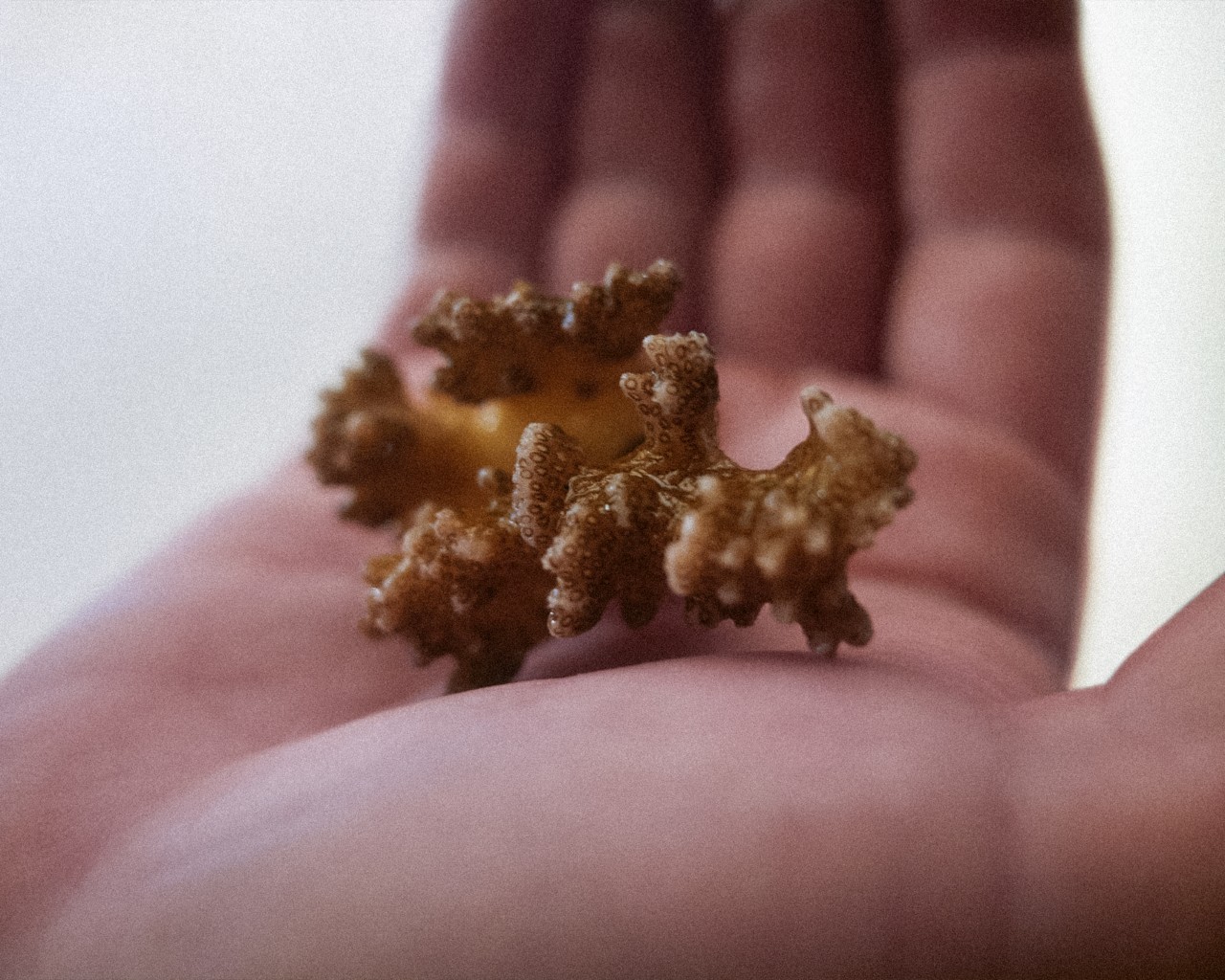
Words by Jasmine Hardy
Photographs by Nobu Arakawa
In partnership with Seed
The joint Two Frontiers Project and SeedLabs research team spotted Shikinejima Island from over a mile away, its volcanic landscape standing out sharply from the soft waves of the ocean. With 10 cases of scientific equipment and their scuba diving gear in tow, the scientists were itching to complete the first part of their fieldwork: exploring the island in search of carbon-sequestering extremophiles.
As CO2 continues to quickly fill our atmosphere and destroy critical ecosystems, decarbonization is essential to mitigating further catastrophic effects of climate change. The Two Frontiers Project and SeedLabs believe that studying the adaptations of microbes, particularly those that have acclimated to extreme, carbon-rich environments, could unlock answers to a more hopeful future—one that centers human and planetary well-being.
“There are many different ways that we can look at this, in terms of first examining microorganisms, finding a better understanding of them, and then going out into the world and seeing how we can apply this knowledge to the problems we have around us,” said Krista Ryon, Director of Operations for the Two Frontiers Project.
Microbes have evolved for billions of years, learning to survive in our planet’s harshest environments by developing unique strategies such as metabolic flexibility, biofilm formation, and symbiotic relationships with other organisms. Volcanically active marine habitats, like those in and around Shikinejima, are rife with extremes: fluctuating temperatures, high CO2, acidity, and mineral-rich waters. The microbial communities that have managed to prosper here could be a potential goldmine for scientific learning. Uncovering these micro-communities amid the island’s rough terrain, however, was no easy task. The expedition to Shikinejima required the expertise of four different research teams from around the world: In addition to the cofounders and leaders of the Two Frontiers Project (Dr. Braden Tierney, Dr. James Henriksen, and Krista Ryon) and SeedLabs, this included expedition collaborators Dr. Marco Milazzo, from the University of Palermo, and Dr. Sylvain Agostini, from the University of Tsukuba.

Amid an incredibly uncertain time for Earth’s future, this all-star team of academics came together to find answers to an important query regarding our home planet: What lessons might we glean from these microscopic organisms on how to live in the face of climate-driven extremes?
To answer this question, the Two Frontiers Project employs a three-step research process: expedition, cultivation, and application. First, researchers embark on an expedition, looking for places like Shikinejima where microbes have adapted to the most extreme circumstances—think polluted and acidified areas in the ocean, or high-CO2 hot springs. The second step, cultivation, involves growing the microbes that show the most promise in a laboratory and investigating their unique capabilities. Finally, the researchers work to scale up and apply what they learned from microbes in the lab to real-world solutions. How might these natural abilities be used to improve carbon capture technology, for example? Could they help pull greenhouse gasses from the environment, biologically transforming them into sustainable products? Or could they be introduced to threatened coral reefs, granting these essential ecosystems another chance at flourishing?
“We’re not just doing science for the sake of science,” said Braden Tierney, executive director and cofounder of the Two Frontiers Project. “We’re trying to solve a problem. And that requires bringing a comprehensive, multidisciplinary team together.”
The team chose Shikinejima as a research site for several reasons. Located in the Philippine Sea, the island is one of a chain of volcanoes and has a landscape dotted with colorful hot springs (onsens), volcanic fields, and hydrothermal vents, all with unusually high carbon dioxide levels. This kind of environment is a potential snapshot of what our world could look like in the near future without intervention—filled with greenhouse gasses and plagued by extreme heat. Yet life has found a way to thrive here: Pools of metallic green and cloudy orange-brown bacteria, algae, and other microbes work together to make a stable home, in spite of an inhospitable environment. They’ve adapted their unique biochemistry to endure in the extreme margins of the planet.

Shikinejima wasn’t the team’s first research expedition. Prior to setting out for Japan, they had studied microorganisms in the hot springs of Colorado’s Rocky Mountains and in volcanic seeps off the coast of Sicily, Italy. Each of these expeditions required building temporary laboratory facilities in remote settings.
But Shikinejima represented a particularly unique case: The team’s sample handling, DNA-sequencing, and on-site culturing would all be done in a former fish processing facility, now the Shimoda Marine Research Center field station. After clearing out the spider webs and centipede carcasses, they unpacked their scientific equipment from hyper-mobile toolkits, which are a key enabler of Two Frontiers’ field research. These kits enable cutting-edge science in the most remote locations—but they also allow others to follow in their footsteps because they use inexpensive, 3D printed, and open-source materials.
After prepping their tools, they split into two teams: one for sampling terrestrial hot springs and one for sampling underwater marine carbon dioxide vents via scuba diving. The terrestrial team headed out in search of a hot spring, hiking down stairs carved into cliffs and along the island’s rocky shores until they reached hot springs that ran into the sea. The dive team went to the marina to catch a boat that would take them to one of the bays around the island, where they would fill their test tubes in areas where they found 176 degrees Fahrenheit water filled with CO2 bubbles. The scientists also connected with local residents, including their host Mr. Kiyoshi Onuma of Shikine Fisheries, who dined with the team at local restaurants each night and told them about the local fisheries, community, and history of the island.
When they’d finished collecting samples, the team met back at the lab to unload the gear and gather, catalog, and store samples on ice so they would remain biologically stable for the remainder of their expedition and travel. With the high humidity and temperatures averaging 95 degrees Fahrenheit, this last step was essential for the five days they were on the island. They took an average of 50 samples per day, representative of the area’s water, sediment, microbial life, and corals thriving against all odds in the hot, acidified ocean.
“Doing cutting-edge microbiology in rough and remote conditions under tight time constraints is like all-day sprints on a mountainous trail run, requiring creativity and adaptability,” said James Henriksen, cofounder and director of research and development for the Two Frontiers Project and scientist at Colorado State University.

After concluding the expedition phase on the island, the next phase of research involved taking the samples back to the scientists’ home labs to cultivate, study, and add to their open database to be shared with the rest of the scientific community. With over 5,000 samples, this open-source model stems from a core value for the Two Frontiers Project and SeedLabs: making sure their research reaches every corner of the scientific community—and beyond.
“[The Two Frontiers Project Living Database] serves as a resource for global researchers to investigate rare and novel microbes which they would likely not be able to access otherwise,” said Erin Miller, senior manager of SeedLabs. “Then, their diversity and unique capabilities can be understood and used for human and planetary health alike.”
The Two Frontiers Project and SeedLabs are hopeful that the vital information gathered from their joint microbial research, now stored in this open system, will contribute to global solutions for decarbonization and climate adaptation, whether through improving carbon capture technology, converting CO2 into sustainable products, or enhancing coral resilience.
Though still in the research and development phase, these projects are part of a strategy that focuses not just on solutions like carbon capture and upcycling, but on addressing the proliferation of carbon itself. Two Frontiers’ status as a small nonprofit research group means it has operational flexibility that allows for nimble progress toward its goals. And the organization shares its data publicly with the research community, too.
Still, applying information from different microbes across a range of internal specialized projects comes with challenges, admitted Miller. Part of the synergy between Two Frontiers and SeedLabs is understanding that working with such vastly diverse microbial species can slow progress—but that collaboration can help overcome those barriers.
Studying the adaptations of microbes in the most extreme environments has allowed this group of scientists to witness the story of survival and evolution at a scale invisible to the naked human eye. As scientists continue to search for answers, there is one thing these resilient, minuscule species make glaringly clear: microbes don’t just persist, they innovate—a billion-year-plus promise that life always finds a way.

This article first appeared in Atmos Volume 11: Micro/Macro with the headline “Extreme Lengths.”
Earth’s Ancient Microbes Offer Lessons for a More Livable Future
